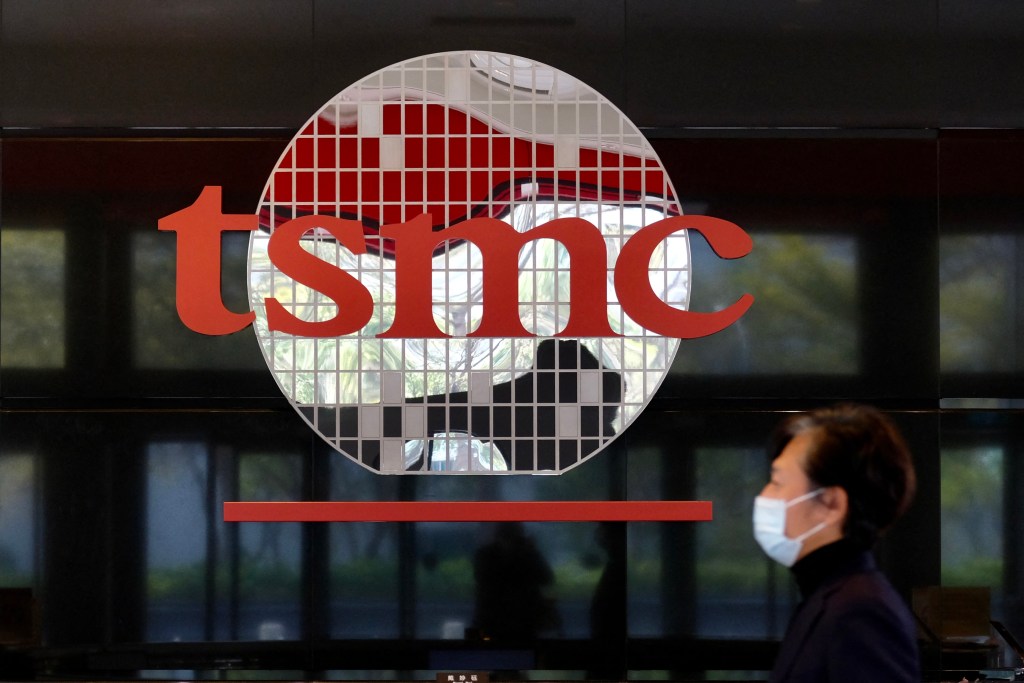Experts see challenges, opportunities for restricting Chinese military access to AI chips

China’s People’s Liberation Army is leveraging American-designed semiconductors to enhance its artificial intelligence capabilities, which could play a key role in a future war against the United States and its allies. Limiting the Chinese military’s access to AI chips will be difficult, but new approaches could help mitigate the problem, analysts say.
The cutting-edge technology includes integrated circuits capable of processing computationally demanding artificial intelligence systems, according to a new report by the Center for Strategic and Emerging Technology (CSET). There are different types of AI chips including graphics processing units (GPUs), field-programmable gate arrays (FPGAs), and certain application-specific integrated circuits (ASICs).
“Different kinds of AI chips have advantages and disadvantages when it comes to either training a machine learning system, or using that system to make an inference about the world. But … only cutting-edge chips — generally considered today to be chips at the 12 nm node and below — are suitable to train and run cutting-edge neural networks,” the study explained.
Notably, the companies that lead the pack when it comes to chip design aren’t the same ones that are top dogs in manufacturing.
“U.S. firms like Nvidia, Xilinx, and Intel dominate the international AI chip design market, while South Korea’s Samsung and the Taiwan Semiconductor Manufacturing Company (TSMC) remain the titans of global semiconductor fabrication,” the CSET report noted. “High barriers to entry, including a reliance on intrinsic knowledge and highly specialized equipment, have so far prevented Chinese companies from catching up.”
However, China’s lag doesn’t mean the People’s Liberation Army (PLA) hasn’t been left empty-handed.
In its latest report on Chinese military power, released last year, the Pentagon noted that the Beijing is using imports to help achieve its military modernization goals.
“The [People’s Republic of China] is investing in and seeking to acquire technologies that will be foundational for future commercial and military innovations including AI, robotics, autonomous vehicles” and other capabilities, the study said in a section about the nation’s foreign technology acquisition efforts.
Over the last five years, the People’s Liberation Army has made “significant progress” in adopting AI for combat and support functions, according to the CSET study.
However, its continued progress largely depends on maintaining access to the special class of semiconductors which are used to train advanced machine learning systems, it noted.
The U.S. government has been taking steps to restrict the supply of artificial intelligence-related tech to China, including adding Chinese government organizations and AI companies to its “Entity List” — a move which bars American firms from selling them technology without Uncle Sam’s approval.
Senior U.S. officials, including Secretary of Commerce Gina Raimondo, have also been banging the drum about the importance of semiconductors for maintaining America’s technology edge over nations like China.
“We also need to retain our strategic advantages by keeping our advanced technologies out of the wrong hands,” she said in June at the Bureau of Industry and Security (BIS) Update Conference.
However, the CSET report noted that “despite more aggressive efforts by the Trump and Biden administrations to limit technology exports to the Chinese military, the PLA is placing orders for AI chips designed by U.S. companies and manufactured in Taiwan and South Korea.”
U.S. semiconductor companies may not be aware that their products are in some cases destined for the Chinese military, the study noted.
Of the 97 individual AI chips that CSET researchers identified while examining public PLA purchase records, nearly all were designed by Nvidia, Xilinx (now AMD), Intel, or Microsemi.

“We searched for, but could not find, any records of PLA units or defense state-owned enterprises (SOEs) awarding contracts for Chinese-designed AI chips,” the researchers noted.
Holes in the export control regime
The CSET report highlighted regulatory shortcomings that have enabled the People’s Liberation Army to acquire U.S.-designed high-tech semiconductors, including how the PLA’s intermediary suppliers are rarely named in U.S. export control lists.
“Under the current U.S. export control system, it is likely that none of the AI chips sold to PLA units or defense companies would have required a license for export from the United States or any other government. Among the seven Chinese companies in our dataset selected to supply U.S.-designed AI chips to the PLA, none are named in the U.S. Commerce Department’s Entity List or Military End User List. Moreover, most of the AI chip purchases in our dataset are for GPUs, which are not a controlled commodity,” the study said.
Notably, the military end-user rule does not apply to foreign-manufactured semiconductors shipped from outside the United States, even if the chips were designed in the U.S., according to the report.
“Except for some types of FPGAs covered by multilateral export control regimes, no other country specifically regulates semiconductor exports to China,” it noted.
Analysts see opportunities for reform.
One option would be to introduce a tailored set of new export controls that are applied multilaterally with nations that play a key role in the semiconductor ecosystem. For example, the Department of Commerce could identify specific types of chips that are relevant to training AI systems, and coordinate with partner nations that manufacture them to screen intended end-users before the semiconductors are exported. The department could also expand military end-user rules and apply them to exports of otherwise uncontrolled chips, experts say.
“Creating new authorities on the grounds of [semiconductor] technological characteristics … would actually give the Department of Commerce, and particularly the Bureau of Industry and Security, much more latitude to act at its own initiative to prevent problematic transfers of U.S. technology,” Ryan Fedasiuk, the lead author of the new CSET report, told FedScoop.

He believes nations that are home to some of the leading chip manufacturers would be willing to sign on to a more robust, multilateral export control framework.
“I think South Korea certainly sees eye to eye with the United States on a lot of issues,” he said in an interview. “I think that the Blue House is working actively for opportunities to cooperate and coordinate with Washington. And I think that export control is an area ripe for this opportunity.”
Taiwan’s concerns about Chinese aggression toward the self-governing island could make it amenable to cooperating with the U.S. in this regard.
“I think that probably there is appetite among policymakers in Taiwan to make sure that they are steeling themselves against increases in Chinese military power. This seems like a commonsense solution that folks in Taiwan’s governments would probably jump at,” Fedasiuk said.
The U.S. government could also beef up its open-source intelligence analysis to examine China’s innovation ecosystem.
“One of the biggest challenges that U.S. regulators face in curbing Chinese military power is knowing who in China is supplying the military with weapons and equipment. And if we actually have more analysts, with language capabilities, using open-source information, I think we can get a much better sense of the problem,” Fedasiuk said.
“The thing that I would most emphasize is that this is a resource problem,” he added. “The more research I do … the more I’m convinced that we need more analysts looking at the Chinese defense industry, and we need more Chinese speakers and subject matter experts analyzing the issue … The U.S. government really needs to be investing in open-source intelligence collection that doesn’t fall squarely within the Title 10 and Title 50 authorities brought with the intelligence community and the military.”
A more extreme policy option that researchers have looked at is trying to impose a total embargo on high-end semiconductor sales to China, regardless of who the end-user might be. However, some are skeptical about the political and economic viability of such a move.
“It would be extremely difficult to persuade leaders in Taipei and Seoul to sign onto such a drastic step. Looking domestically, suddenly adopting an embargo on AI chip exports could have severe and potentially catastrophic consequences for the U.S. semiconductor industry and long-term technological innovation,” the CSET report said, noting that China accounts for about 25 percent of global AI chip consumption, and a total embargo would result in U.S. chip designers losing billions of dollars annually.

Intermediate suppliers
China’s “military-civil fusion” strategy — which includes a focus on commercial tech that the People’s Liberation Army can leverage — presents a big challenge for U.S. agencies trying to limit the PLA’s access to AI chips.
“Beijing’s MCF strategy includes objectives to develop and acquire advanced dual-use technology for military purposes,” according to the DOD report on China’s military power. That entails “fusing” the nation’s defense industrial base and its civilian technology and industrial base, integrating and leveraging science and technology innovations across military and civilian sectors, and other steps to try to give the PLA an edge.
In each case the CSET researchers examined as part of their study, the contracts that the PLA and state-owned defense firms awarded for U.S.-designed chips went to Chinese intermediary companies.
“Difficulties associated with tracking AI chips and the variety of potential vendors would make it challenging for U.S. regulators to wage a targeted crackdown on the PLA’s intermediary chip suppliers,” they said in their report. Additionally, “the PLA often buys commercial off-the-shelf AI systems from Chinese academic institutions and private companies, which also buy U.S.-designed chips, and are not easily captured by U.S. restrictions on military end-users.”
It continued: “Due, in part, to the Chinese Communist Party’s military-civil fusion strategy, U.S. regulators have struggled to distinguish between military and nonmilitary end-users in China. A policy framework that focuses narrowly on limiting chip sales to the PLA and major defense SOEs risks leaving China’s burgeoning AI defense industry intact, and would minimally affect the quality of systems and services sold to the PLA.”
Despite the challenges involved, Fedasiuk believes new export control authorities and approaches implemented multilaterally with like-minded partners — combined with more resourcing and leveraging of open-source intelligence to better understand China’s defense innovation ecosystem — can help keep more AI chips out of the hands of the PLA.
“It’s hard to quantify, but I do think that they would have a substantial impact — if enacted appropriately and comprehensively,” he said.
FedScoop asked Fedasiuk if reducing the PLA’s access to these types of chips would push Beijing to accelerate its efforts to boost its semiconductor industry — thereby minimizing the long-term impact of more robust U.S. export control initiatives.
China is already investing hundreds of billions of dollars to strengthen its semiconductor industry, Fedasiuk noted.
“I would just be skeptical of claims that this is going to accelerate their push because, again, there’s already so much money in the space. I have no idea what an elevated push for indigenization would look like. It seems like it’s dialed up to 11” already on a scale of 1 to 10, he said.
Fedasiuk is also skeptical that additional efforts to restrict AI chip exports would provoke China to invade Taiwan in order to seize control of semiconductor manufacturing facilities.

“If they attempted to do so, you know, if I were a military planner, I’m gonna bet that those fabrication facilities are destroyed. There are inordinately delicate rooms, clean rooms, where the chips are actually … printed. If a single munition were to detonate like 10 feet away, it would just be disastrous and completely eradicate any value of the facility. So I really think that this is kind of an overblown threat — the idea that China will invade to seize fabrication potential,” he said. Taiwan, faced with a Chinese invasion, could also blow up the facilities as an act of sabotage, he noted.
CHIPS legislation
Meanwhile, senior Biden administration officials are pushing Congress to fully fund the Creating Helpful Incentives to Produce Semiconductors (CHIPS) in America Act, which has been stymied by political gridlock over a broader legislative package aimed at boosting U.S. innovation. The legislation would provide more than $50 billion in investments to boost domestic semiconductor manufacturing.
In a joint letter to Congress sent July 13, Commerce Secretary Raimondo and Defense Secretary Lloyd Austin said semiconductors are “ground-zero” in the technological competition between the United States and China.
“They are driving innovation and competitiveness in nearly every emerging technology” including AI, and also have “a wide range of critical national security applications,” they wrote.
“This bill will prioritize strengthening domestic manufacturing capacity and supply chain resiliency, spur domestic semiconductor manufacturing, make transformational commitments to research and development, and help counter competition from China, while also shoring up U.S. competitiveness, lowering costs and creating jobs,” the secretaries said. “If we miss this window, the United States will fall further behind in global semiconductor production and jeopardize our advantage in next generation design.”

Fedasiuk supports passing the CHIPS in America Act, arguing the legislation is “desperately needed” to keep the US. semiconductor industry competitive with other nations including China. However, he doesn’t think it will necessarily have much of an impact in addressing the problems outlined in the CSET report.
“Theoretically, yes, if chips are made here they could more easily fall under the jurisdiction of U.S. regulators, and so could more easily be controlled by U.S. export control law,” he said.
However, the number of high-end AI chips that would be manufactured in fabrication facilities in the United States as a result of the CHIPS legislation might be relatively low compared to the number being built in Taiwan, for example, he added.
“As far as I understand that … you’re talking about kind of commodity-level chips used in iPhones, which are not the same as these very high-end devices that would be used to train AI systems and next-generation weapons. And so that’s why I think that the impact would be miniscule,” he said.
The U.S. government can try to provide U.S. companies alternatives to the massive Chinese market as part of an effort to reduce sales to China, the CSET report noted. “But the real challenge would be whether, or how, to compensate for the loss of Chinese market access,” it added. “Even with carefully calibrated incentives and a more robust industrial policy, some experts warn that eliminating this source of revenue could have dire consequences for U.S. innovation and economic competitiveness.”
The Commerce Department did not respond to a list of questions from FedScoop about efforts to restrict Chinese military access to AI chips.



